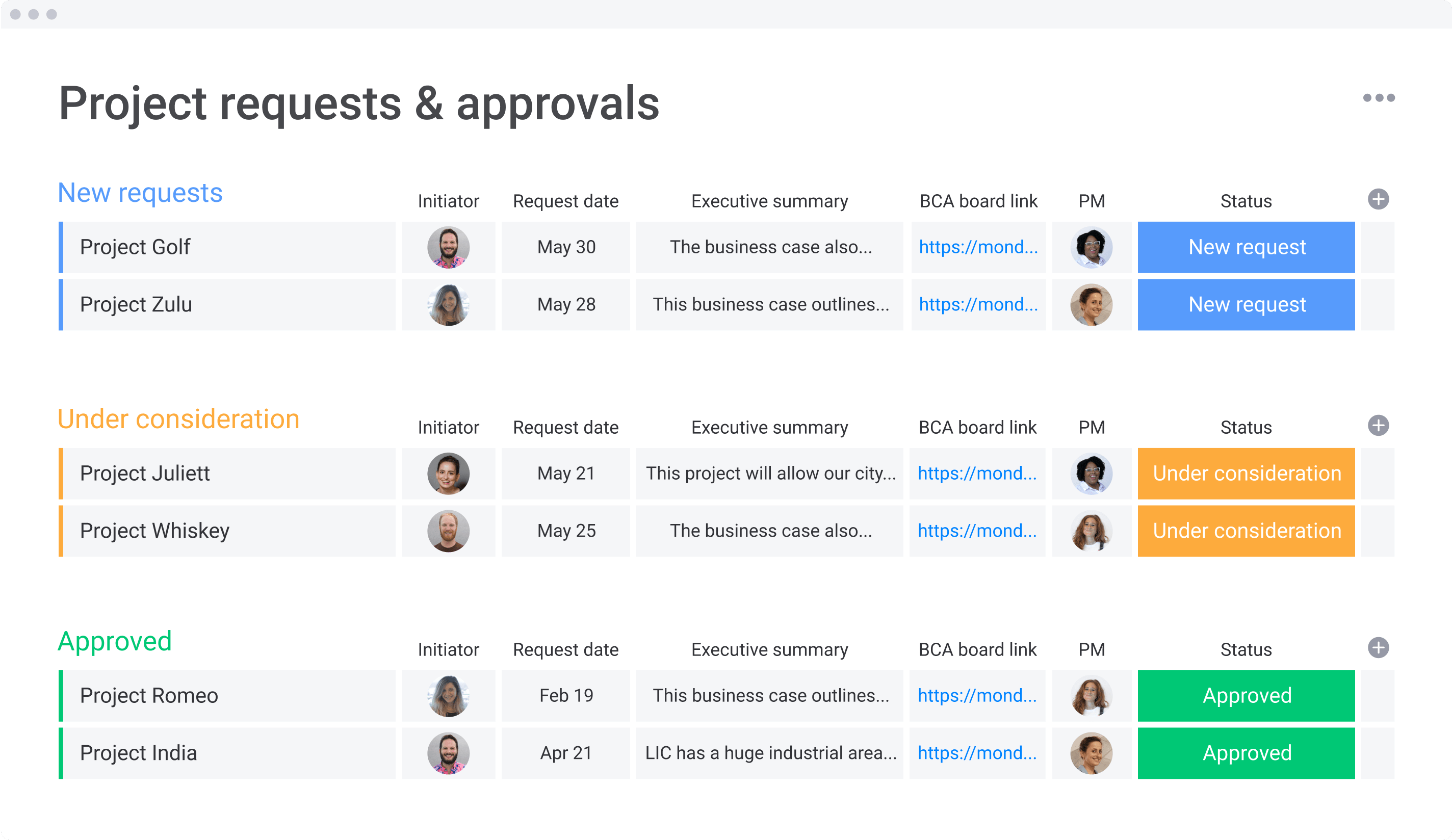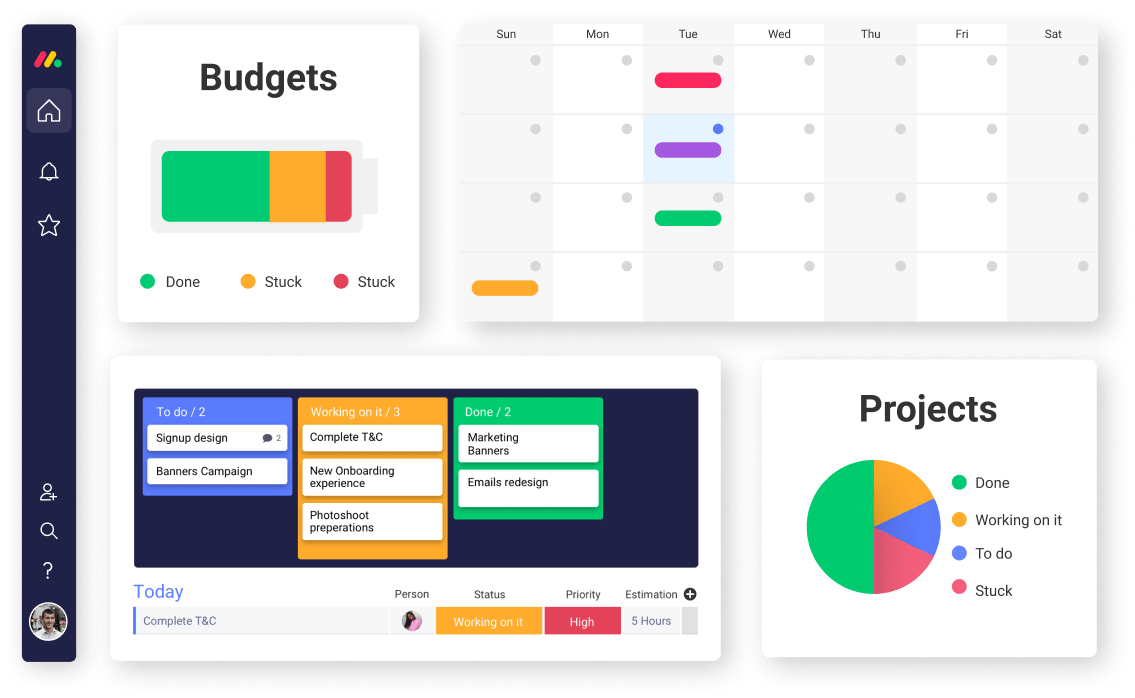Without taking time to use a project scope document in your planning process, many projects fail, plain and simple.
When you don’t take into account the scope of work, there’s not just enough direction for project teams and stakeholders when it comes to project requirements, project schedule, and of course project deliverables.
In this post, we’ll be diving into how you can practically determine and perfect the scope of your projects so that they’re efficient, effective, and objective-focused. We even have a tool in mind to help you write a project scope document to achieve your project goals.
What is a project scope document?
Project scope is the plan behind your project that helps you keep everything (and everyone) on track over the course of its execution.
Project scope is a manner of setting specific limits and boundaries to the project. This involves defining goals, tasks, deliverables, deadlines, and expectations around what is needed from all parties involved, as well as a definition of what is and what is not part of the project. Project scope is not a technical specification of deliverables written in broad, high-level brush strokes. Instead, it’s very defined, specific, and detailed with lots of clarity and no gray areas that could lead to ambiguity around the project.
A project scope document aims to collect this information and organize it so it can be used as a pillar for transparency for all stakeholders.
Because it can have so many changes and feedback in the planning stage, we recommend you manage it in a collaborative project management software platform like staging-mondaycomblog.kinsta.cloud Work OS — the perfect place to manage the rest of your workflows, too.
When to write a project scope document — project iniation
The project initiation phase of the project life cycle is all about setting the foundations for a project’s success. So it’s only natural that you would write a project scope document during this phase.
During this phase, some of the most important detail gathering and communication between team members and stakeholders take place.
Read also: our blog on scope of work in project management.
Project scope statement vs. statement of work
When it comes to project scope management, you’ll hear the terms project scope statement and statement of work included in the project management lexicon. How can we understand the difference?
A project scope statement breaks down what the work will include and also what it won’t include. A statement of work, however, is a more detailed document that includes the scope of work in addition to other specifics regarding how and when the work will be completed.
The benefits of using a project scope document
There are some other specific benefits to having a project scope document related to clarity, focus, and organization. Let’s explore each in more detail.
Clarity
The clarity that comes from project scope means less time is spent guessing or making assumptions about what needs to be done and by whom. That means everyone involved can feel more confident about their roles and a stronger grasp of what’s expected of them during the course of the project.
Focus
A focused project scope keeps the project from inflating (scope creep) or falling short of the original vision by defining what is part of the project as well as what isn’t. This keeps things from derailing or ballooning to a point where it’s no longer manageable. No one wants to be part of a project that ultimately feels directionless.
Organization
Having a project scope helps kick off a project with an organized project plan and project objectives so that things flow smoothly in a logical progression with benchmarks along the way. This helps all project stakeholders see their parts of the larger project life cycle. If you use a Work OS like staging-mondaycomblog.kinsta.cloud, you can add a living Gantt chart to make this context clearer and more accessible for everyone.
Guiding principles for determining project scope
Gather information
First, you need to know the “why” behind your project and the core elements that need to be in place for the project to be successful. This means starting with research and information-gathering to be sure you have a strong grasp on what the project really is. Don’t rush this step, take your time and get all the facts in place before moving ahead.
Define project scope
As you build out the project scope’s parameters, include clear objectives, phases and due dates, tasks, resources, budgets, and responsibilities. A key part of this will be defining SMART goals, which means goals that are Specific, Measurable, Achievable, Realistic, and Time-possible.
For example, if the project is installing new PM software for the members of the sales team, determining the project’s scope means asking yourself and the relevant stakeholders questions such as: do the project include making sure that the new PM software is actually adopted by the sales team? Does it include maintenance service? Does it include onboarding every team?

Assign accordingly
From here, it’s time to start assigning tasks. You know your team members’ strengths, so assign project tasks that speak to their best skills–but don’t overload people. Delegation is the name of the game, but be clear about their role within the larger project and explain how their piece will be part of the whole so they can visualize what they’re helping work toward.
Spell out what’s not included in the scope
Be clear about what’s beyond the project scope. Hard boundaries and constraints to the project keep the tasks (and the people assigned them) focused. Eliminate ambiguity and brainstorm as a team to spot the holes in project scope or to find what questions are naturally prompted.
For example, if you are bringing in outside contractors to scale up your efforts within a specific department, you’ll need to be clear with them about what you need and when. A project scope helps ensure both parties are on the same page and that together you’ll reach the desired end goal, on budget and on time.
Be clear about responsibilities and ask questions like: Are they responsible for implementation, or just strategy? How many phone calls are included? How many rounds of revisions?
Monitor progress
As you work on different phases of the project, be sure that everyone is staying on track and that deliverables aren’t falling through the cracks. Set clear benchmarks and deadlines along the way to help gauge the momentum of the project and use them as indicators of progress toward the final goals.

For example, if you’ve hired a web designer to help build out a new website, deliverables tied to deadlines and phases will help keep things moving and from getting too far ahead or behind. You may even parcel out that professional’s pay so that they’re only paid once certain benchmarks are met, as this can act as a powerful motivator for progress on both sides of the business relationship.
Frequently asked questions
What should be included in a project scope document?
- The rationale behind the project
- Key objectives
- Statement of work
- Major deliverables
- Key milestones
- Major constraints
- Scope exclusions
What are the three aspects of project scope?
- Definition
- Work Breakdown Structure (WBS)
- Management
Use a project scope document to stay on target
The bottom line when it comes to project scope management: less isn’t more. The more specific you can be about the project, what it entails, who’s doing what, and the timeline for deliverables, the more you can build a roadmap for a successful end result that everyone involved can be proud of.
Now that you have a sense of direction, start gathering information with our Project Requests and Approvals template and building out your own project scope document on staging-mondaycomblog.kinsta.cloud.

